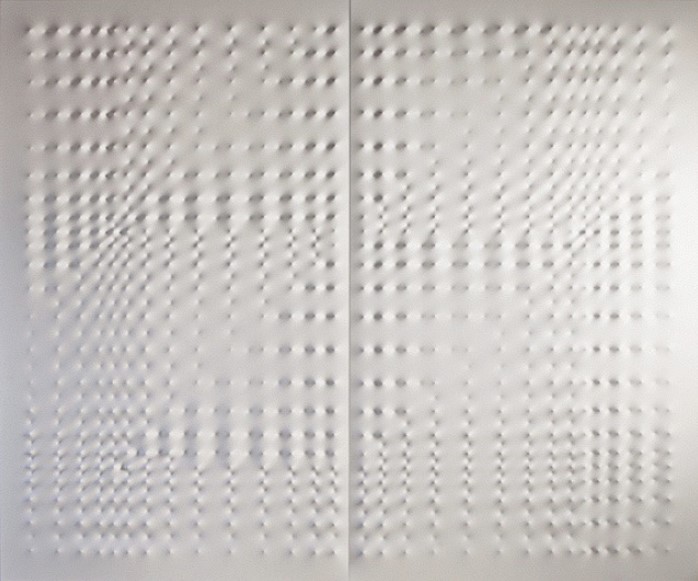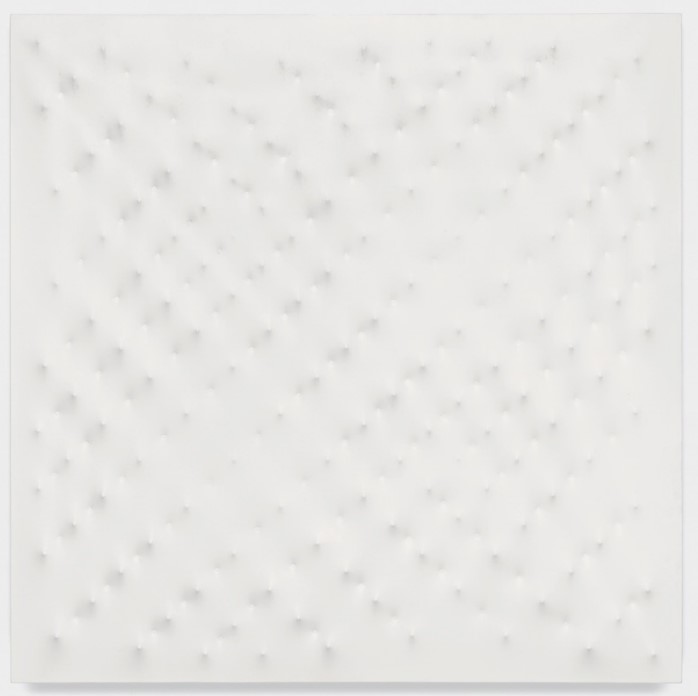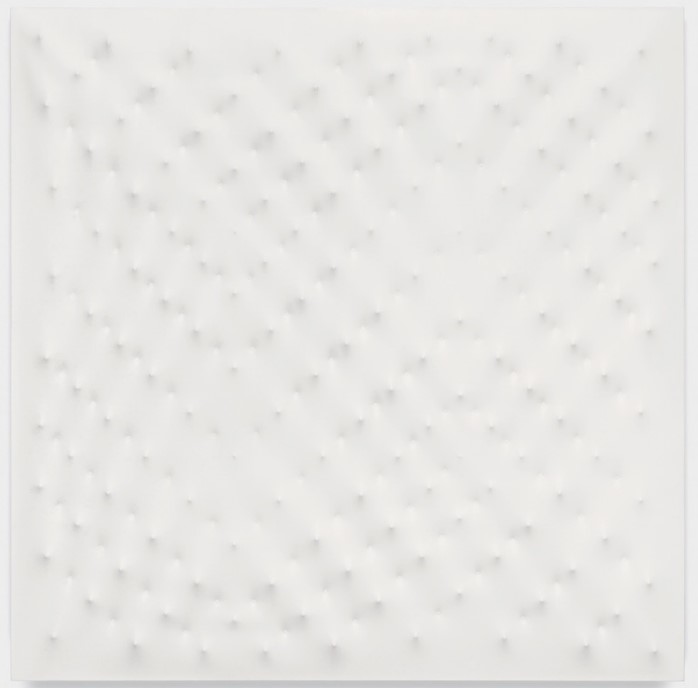Cayón is pleased to present an exhibition by Enrico Castellani (1930-2017), taking place from February 10th until April 14th in our two Madrid spaces (Blanca de Navarra 7 and 9). This is the third Solo Show dedicated to the Italian artist at the gallery since 2018.
Enrico Castellani (1930-2017) trained in painting and sculpture at the Royal Academy of Fine Arts in Brussels, a city where he also graduated in Architecture in 1956. After completing his studies, he returned to his country of origin where in 1959 he would found, together with Piero Manzoni, the Azimut Gallery in Milan. This space, associated with a publication under the name Azimuth (ending in h), would become a meeting point for the most innovative art.
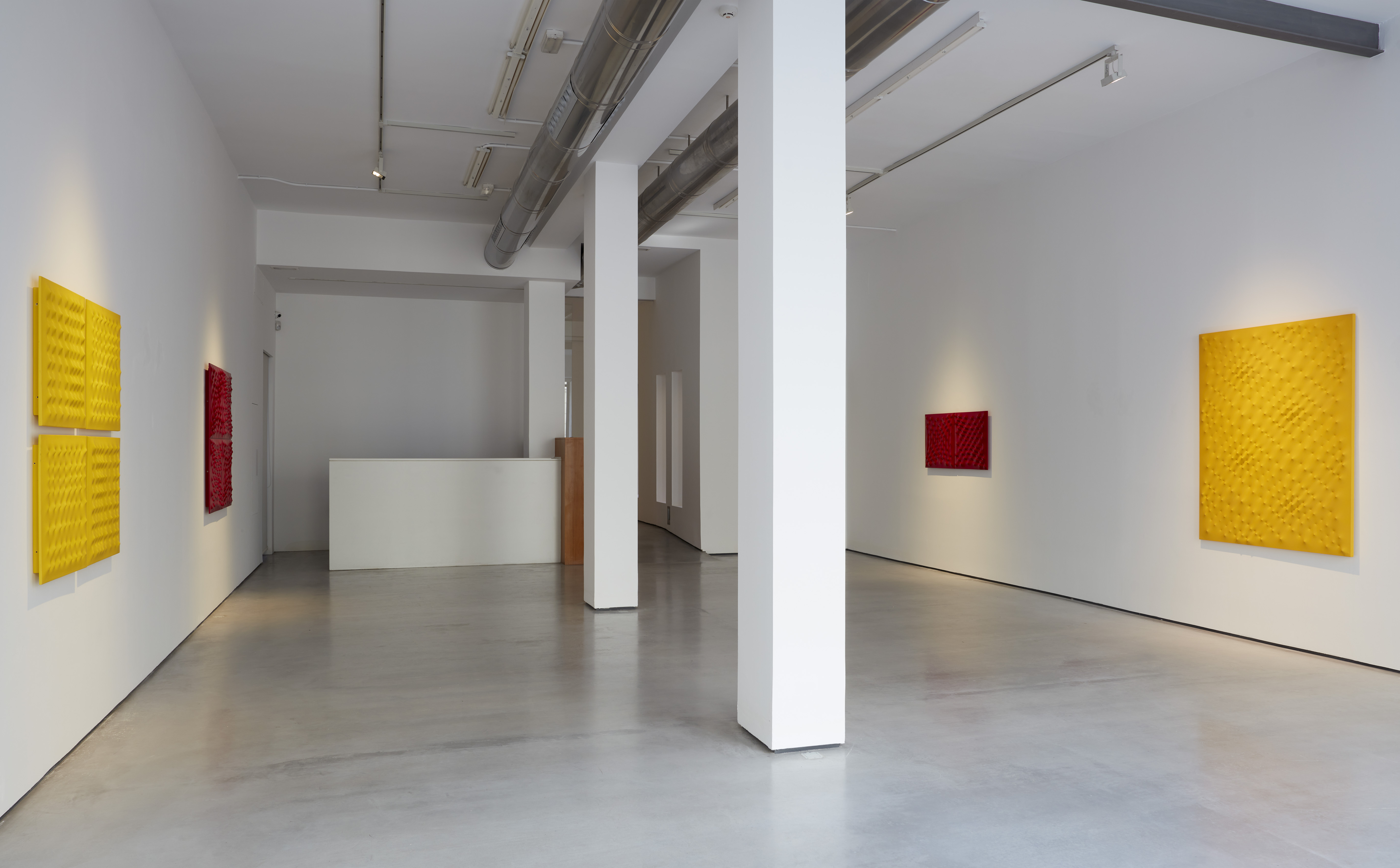
Enrico Castellani, Cayón, Madrid, 2023.

Enrico Castellani, Cayón, Madrid, 2023.

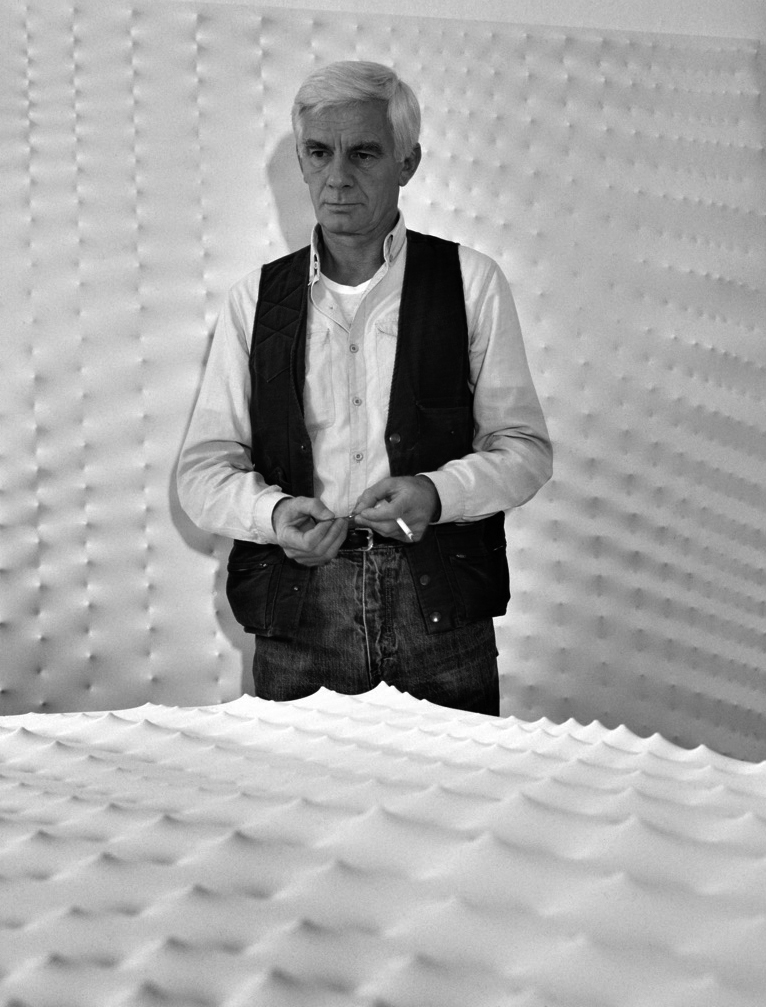
Enrico Castellani’s work goes beyond the limits of painting, by integrating theoretical concepts of sculpture and architecture in order to explore and present a new plastic paradigm. Committed to carry out a redefinition of art, so to adapt to contemporary concerns, Castellani integrates light, color, space and movement in his pieces, through the use of different materials; transcending the flat surface of the canvas, the shadow cast by the convex surface on the concave being a fundamental element of the work. The shadow, in Castellani’s words, “is just as important as color or form.”
“We are not interested in expressing subjective and variable reactions to specific events. on the contrary, we wish to establish a continuous and harmonious discourse through fixed, immovable elements. We exclude these means of expression (composition, color and plasticity), being in themselves sufficient to give the works themselves concreteness of infinity, since they are elementary entities that can be merged in different ways in a work of art. They are indefinitely repeatable“.
This conception of the painting as a window into an infinite space is perhaps the one that best explains Enrico Castellani’s oeuvre. Through the mobility of these three elements, he achieves an infinite plastic succession.
The exhibition will feature ten works, which cover the last twenty years of the artist's production, from 1989 to 2012. According to his principles, most of them are made on materials that achieve a strong quality of plasticity, which is observable by its defining characteristics both on the front and on the back of the work; so that, in turn, they function as a "quasi" tactile sculpture. "Enrico Castellani's work is music to the eyes," says Bruno Cora, art historian and critic, an excellent connoisseur of the Italian artist's work.
Finally, and emphasizing the importance that the chromatic range had for Castellani, the works on display will present an array of the artist’s preferred choice of colors; those being white, red, and yellow.


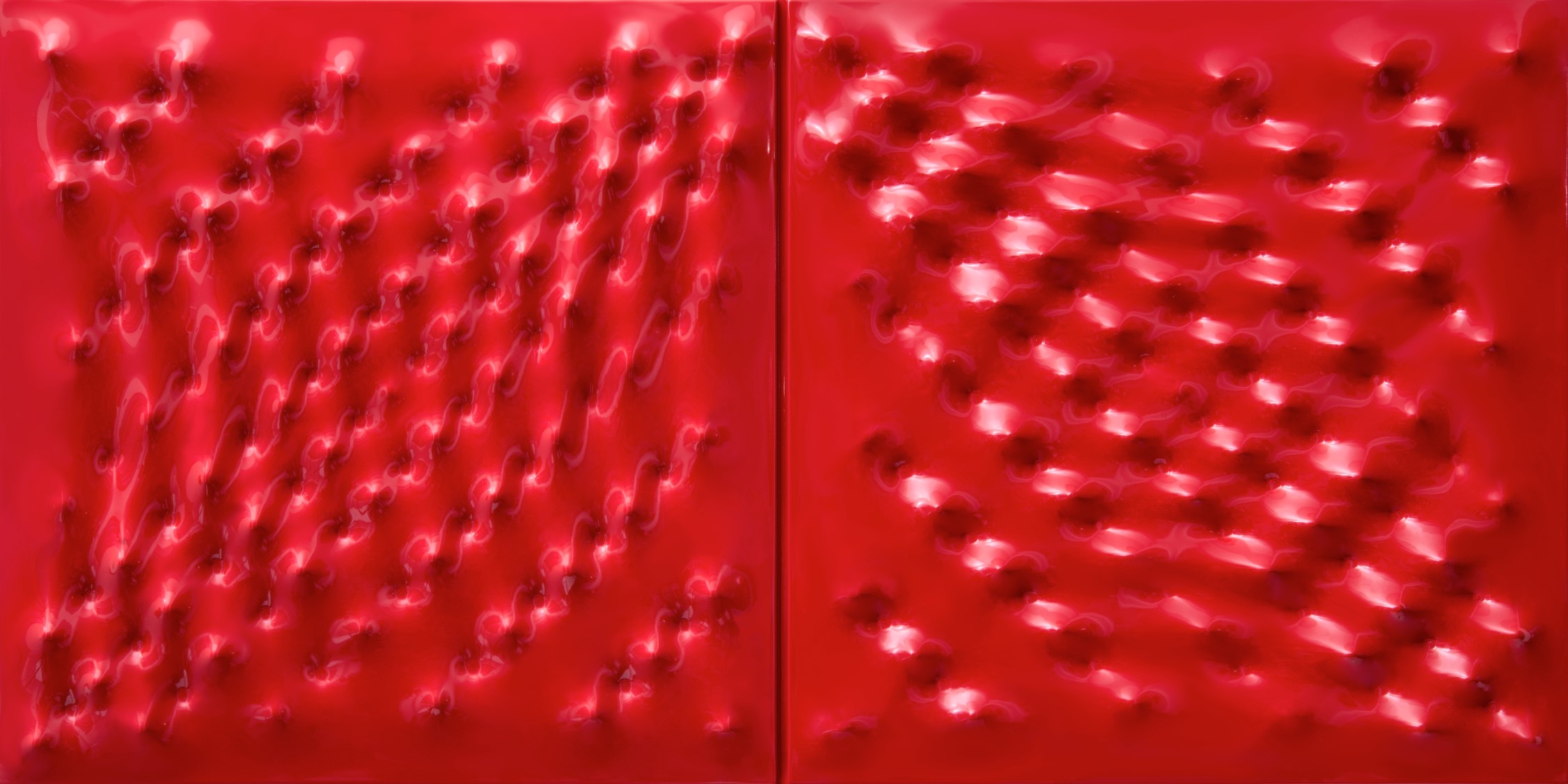
Superficie rossa (06-057-A)
2006
High relief
in enameled aeronautical aluminum
58,5 x 116,5 cm.
CA036

Superficie bianca (06-070-D)
2006
High relief
in enameled aeronautical aluminum
115 x 77 cm.
CA037
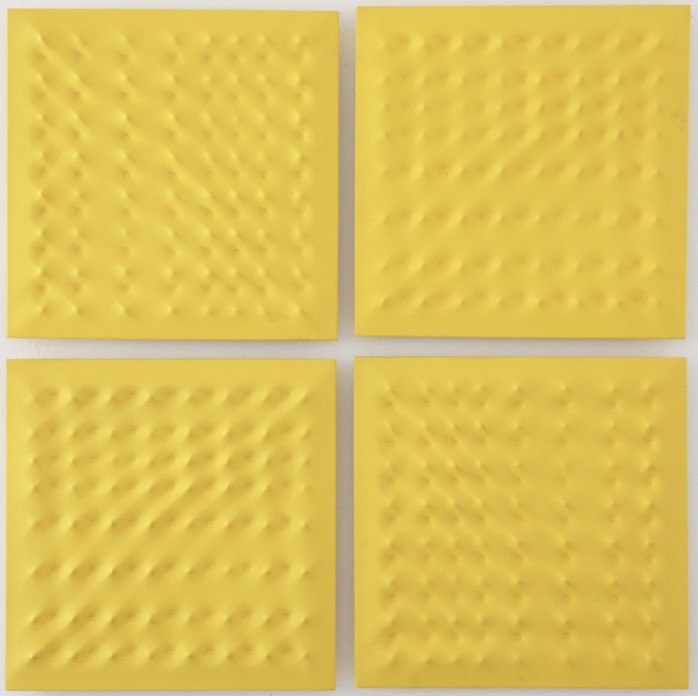
Polittico / 1 giallo 1 blu (08-055)
2008
High relief
in enameled aeronautical aluminum
116 x 116 cm.
CA038

Superficie rossa (06-062-D)
2006
High relief
in enameled aeronautical aluminum
116.5 x 116.5 cm.
CA034
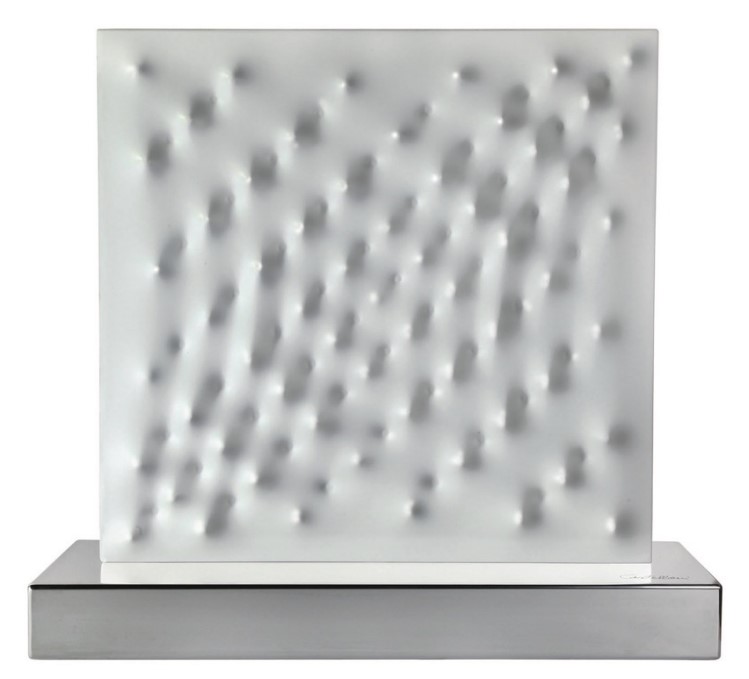
Superficie bianca
(08-052-C)
2008
Double-sided high relief
in enameled aeronautical aluminum
with steel base
58 x 58 x 6 cm.
CA039
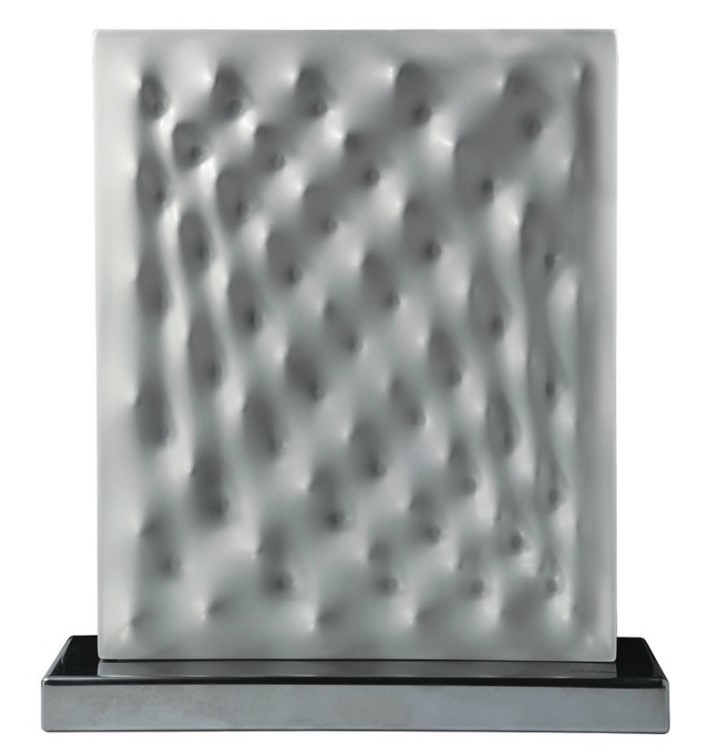
Superficie bianca (12-010-A)
2012
Double-sided high relief
in enameled aeronautical aluminum
with steel base
48 x 38 cm.
CA040

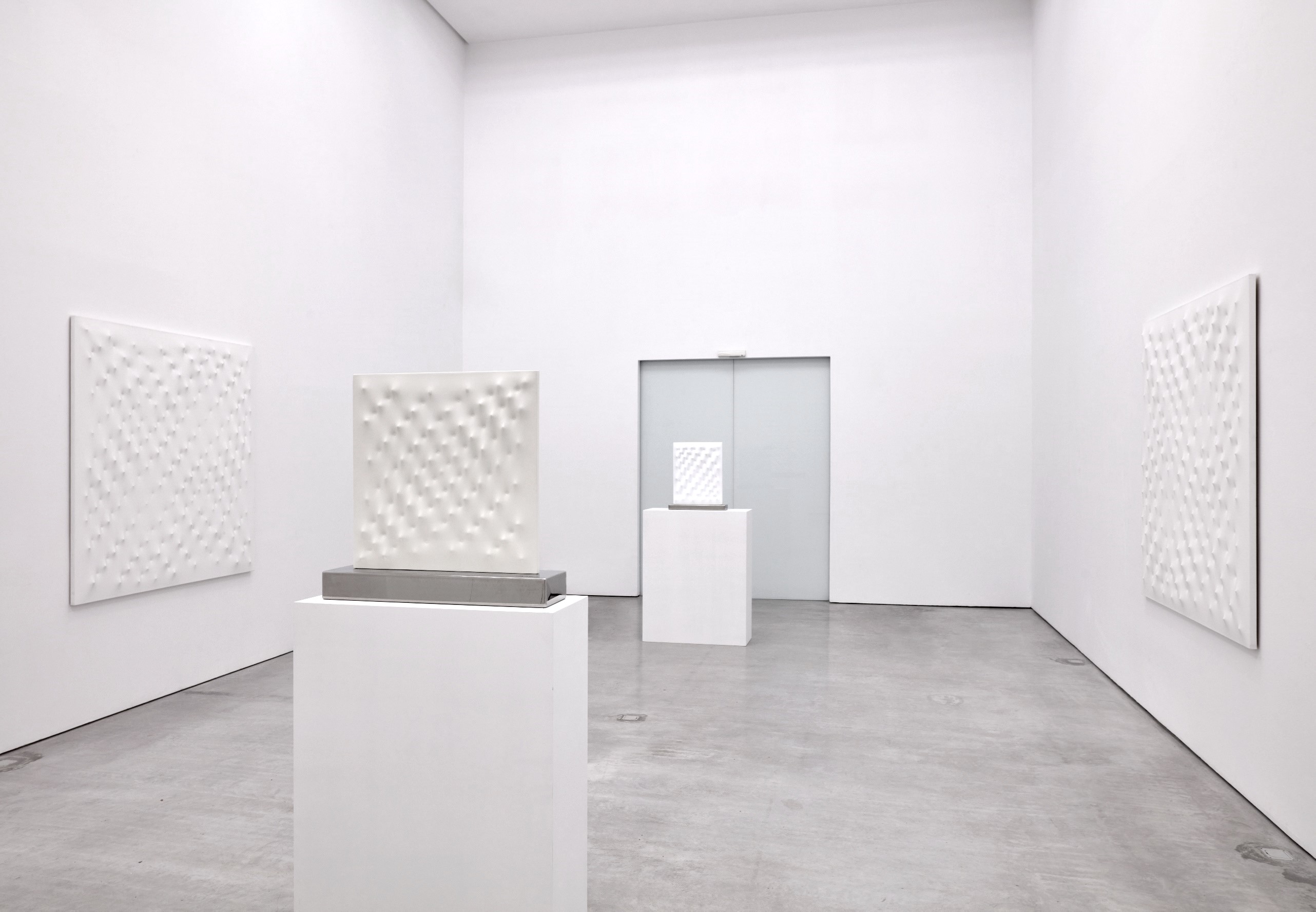
Enrico Castellani, born in Castelmassa, Rovigo, in 1930, was one of the great protagonists of post-war Italian art. In 1952, he moved to Brussels to attend painting and sculpture class at the Académie des Beaux Arts In 1956, he graduated in architecture at the École Nationale Supérieure de la Cambre. The following year he returned to Italy, settling in Milan and becoming an active component of the new artistic scene.
In 1959, together with Piero Manzoni and Agostino Bonalumi, he founded the magazine “Azimut” which proposed the total elimination of the previous artistic experience and a new beginning, and fully centered on the concept of abstraction. This zeroing was achieved with the use of monochromatic canvases with various techniques, to create effects of iridescent lights and shadows with the inclination of the light source. The study and analysis of the possibilities offered by the bending of the canvas through the use of nails and ribs gave life to Castellani’s stylistic code that critics defined as “different repetition” from the careful repetition of full and empty spaces given by rhythmic extrusions of the canvases, constituting an unparallel new path.
Castellani participated in the Venice Biennale in 1964, 1966, 1984 and 2003. In 1965, he participated in the group exhibition “The Responsive Eye” at the MOMA in New York and in the VIII Biennial of São Paulo in Brazil.
In 1967 he was invited to build an environmental work for the magazine “The Space of the Image” in Palazzo Trinci in Foligno. Partially destroyed after the exhibition, he created a second version in 1970 as part of “Vitality of the negative in Italian art 1960/70” at the Palazzo delle Esposizioni in Rome.

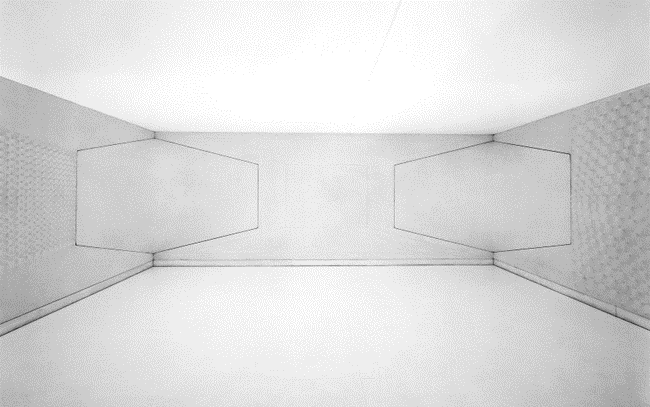
Recent exhibitions include solo exhibitions at the Galleria Lia Rumma in Milan in 1999 and 2006, at the Fondazione Prada in Milan in 2001, at Kettle’s Yard at Cambridge University, at Greta Meert in Brussels in 2002, at the Galerie Di Meo in Paris in 2004, at the Pushkin Museum in Moscow in 2005; and at Haunch of Venison in New York in 2009 and 2012.
On October 13, 2010 Castellani received the Praemium Imperiale.
Enrico Castellani spent the last decades of his life in the small village of Celleno in Tuscia, where he passed away in 2017.
